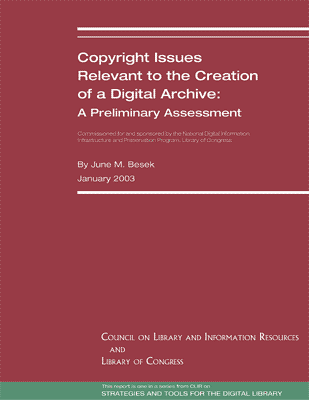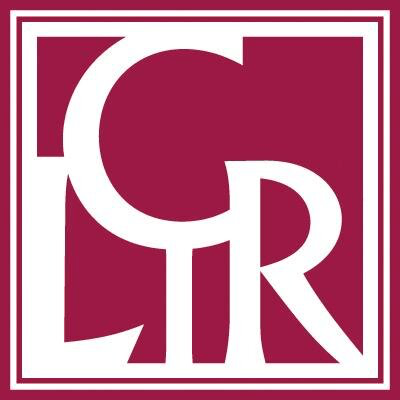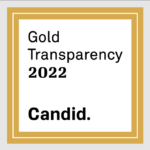Copyright Issues Relevant to the Creation of a Digital Archive: A Preliminary Assessment

Commissioned for and sponsored by the National Digital Information Infrastructure and Preservation Program, Library of Congress
by June M. Besek
January 2003
Copublished by the Council on Library and Information Resources
and the Library of Congress
Copyright 2003 in compilation by the Council on Library and Information Resources and the Library of Congress. No part of this publication may be reproduced or transcribed in any form without permission of the publishers. Requests for reproduction or other uses or questions pertaining to permissions should be submitted in writing to the Director of Communications at the Council on Library and Information Resources, 1755 Massachusetts Avenue, NW, Suite 500, Washington, DC 20036.
About the National Digital Information Infrastructure and Preservation Program
4. Relevant Copyright Exceptions
9. Digital Millennium Copyright Act
- 10.1 Limitations of Copyright Treaties
- 10.2 Potential Difficulties in Obtaining Redress for Infringements Abroad
- 10.3 The Archive’s Potential Exposure to Suits Abroad
About the Author
June Besek is executive director of the Kernochan Center for Law, Media and the Arts, Columbia Law School. She holds a law degree from New York University School of Law. Before joining the faculty of Columbia Law School, Ms. Besek was a partner at Schwab Goldberg Price and Dannay in New York, and director of Intellectual Property at Reuters America.
About the National Digital Information Infrastructure and Preservation Program
The mission of the National Digital Information Infrastructure and Preservation Program is to develop a national strategy to collect, archive, and preserve the burgeoning amounts of digital content, especially materials that are created only in digital formats, for current and future generations.
Preface
As libraries move into the digital age, they increasingly face copyright and other intellectual property questions. Creating digital surrogates and using digital technologies to make copyrighted works available to the public raise many issues. For American librarians, June Besek’s essay is a most welcome tool. She has analyzed the issues that librarians must address as they are asked to make decisions about what may be made available to their patrons in digital form, and in an unbiased way she has described these issues and their implications. Additionally, she has identified areas where there is much uncertainty and recommended further studies to narrow the issues and to suggest constructive solutions.
Copyright issues are complex and can be controversial. It is a challenge to find an appropriate balance between, on one hand, serving the public interest in developing the Internet as a tool for providing information and, on the other, protecting authors’ emerging digital markets. Ms. Besek makes a great contribution; she sets out concisely and clearly the breadth and depth of the issues. Authors, publishers and librarians will benefit from her insightful exploration of the possibilities and problems encountered in our digital, networked environment.
Marybeth Peters
Register of Copyrights

